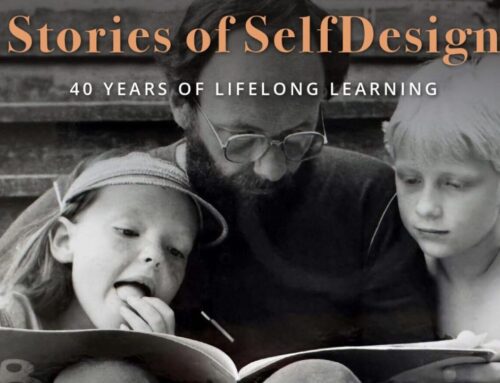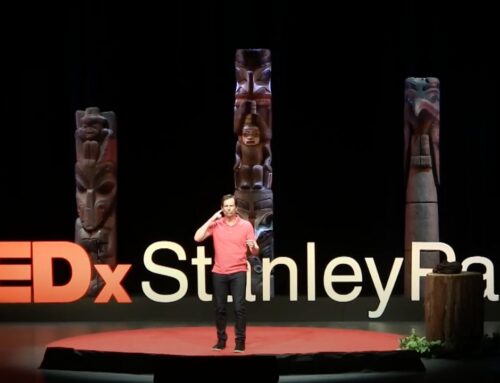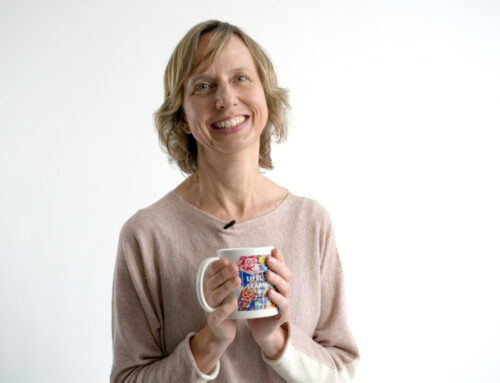When it comes to innovative models for learning, SelfDesign leads the way. In fact, innovation has been integral to SelfDesign since its conception.
In 1982, SelfDesign founder Brent Cameron considered his daughter’s request to leave kindergarten and return to her learning environment of relationships within family and community. Having watched his child approach learning with enthusiasm, curiosity and passion for her first five years and having an education background himself, Brent could easily contrast her response to the limitations of public school’s structured system.
Trusting in the basis of his child’s desire, Brent supported her request and embarked on a journey of mutualized learning founded in love and respect. What began in 1983 as the tiny Wondertree Centre in Vancouver grew through the years, and in 2002 it transformed into SelfDesign.
But let’s take a step back to 1983, when an intellectual friendship began to form between Brent Cameron, founder of SelfDesign and who, at the time, was running the WonderTree Centre, and Kathleen Forsythe, who was the executive director of the Knowledge Network. This friendship continued throughout the 1980s. From 1993-1996, Brent and a group of others ran a program called VirtualHigh which was a leading-edge, electronically supported educational program for high school–aged youth that used a software called FirstClass. VirtualHigh was also a program of Wondertree, the original society whose name was later changed to the Wondertree Foundation for Natural Learning in 1996 and then to SelfDesign Learning Foundation in 2010.
Kathleen was on the board of the Wondertree Foundation during those years but continued her own work in the world – accumulating a host of relevant experiences that would eventually enable her to serve and contribute to SelfDesign.
She worked with school districts, colleges and universities across North America to create major technology innovations at all of those levels. She was a leading speaker on how technology could be used for learning in a way that was person-first and heart based. Forsythe had a reputation for being a thought-leader in this area since the 1970s.
“There was a major bureaucratic breakthrough in 2001 when, after much hard work on Brent’s part, the Ministry was ready to legitimize this innovative alternative school using technology we ended up calling SelfDesign,” Kathleen says. “Brent called me up and said ‘Kathleen, it looks like we’re finally going to get our chance!’”
It was then that Kathleen became the vice-principal of SelfDesign, with Brent as the principal and executive director, and a team of 10 others came on board with them. Using the experience with the FirstClass platform, Brent was quickly able to provide a ‘village of conversations’ for the learning community several years before the advent of social media.
SelfDesign was born from a place of innovation, with deep values to a particular set of learning ideals. Those elements that set the foundation then, continue to be foundational to how SelfDesign is carried out today.
Our foundational philosophy has the learner at the centre. Everything else is placed around the learner in response to their needs – not just their educational needs but the well-being of the learner as a whole person.
While technology facilitates the collection of data and offers a vehicle for coordinating relationships, the growth and development of the learner take place in their relationship to their communities and their real life learning experiences. With learning happening everyday in real life contexts, fostering a love of and desire for lifelong learning is also foundational to SelfDesign’s model of education.
“SelfDesign is cutting edge in terms of thinking about how learning happens,” says SelfDesign Principal of Educational Programs Nikki Kenyon. “At SelfDesign, we believe that learning happens as a response to a relationship with your environment, a person, or an object. That relationship generates the learning experience, and we think about the learner as a holistic being. We focus not just on how they’re doing in math or writing but also how they’re doing in building relationships, executive functioning skills, organization, planning and flexibility. We’ve had that as a key focus of our own internal mandate, for many years, and it is interesting to see that show up in the province-wide curriculum now after we’ve been doing it for 15 years.”
“The original core values Brent outlined continue to be foundational principles on which our educational programs are built,” she continues. “Tech platforms have changed, thereby upgrading the way we communicate, but the core principles and the model that was originally established still remains.”
SelfDesign is unique in the landscape of online learning and education in the province. We have a strong commitment to encouraging learners to design their own pathways to be able to build skills and competencies.
“And we do it in a way that connects with their own interests and passions,” Nikki says. “That’s something we’ve been doing really well for a really long time.”
SelfDesign is now led by CEO Amber Papou with a board of directors and a leadership team who strive to make a difference in the lives of our learners and families. SelfDesign is truly one of a kind – a school and foundation that responds to learners’ needs with ingenuity. Ever on the forefront of what true learning and education looks like, SelfDesign is a tech-enabled school that facilitates real-life and lifelong learning.







